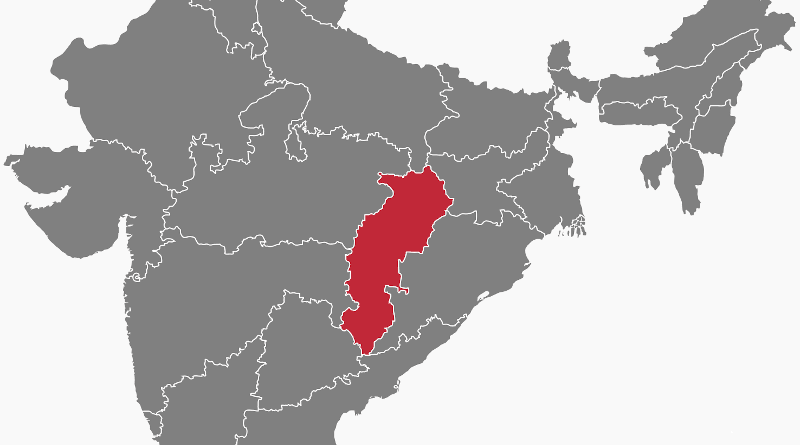Limitations Of Operation Green Hunt
By Dr. Shanthie Mariet D Souza and Dr. Bibhu Prasad Routray
On April 6 the biggest ever Maoist strike on the security forces claimed the lives of 76 CRPF personnel in Dantewada, Chhattisgarh, and reinforced the claim that left-wing extremism has indeed emerged as India’s most pressing internal security challenge. The CPI-Maoist, shrugging off initiation of the government’s coordinated offensive, ‘Operation Green Hunt,’ is in no mood to compromise and continues to demonstrate that ‘it will not lie low for the storm to pass over.’ To the contrary, it will take on the state to assert its military superiority.
Though analysts bemoan the lack of a ‘strategy’ to deal with the Maoists, this shortcoming would seem the least of the worries for the Indian state as it engages the extremists in vast un-administered stretches of the country. Without addressing the tactical basics which must implement any counter-insurgency effort — such as trained police personnel, an intelligence network, development initiatives, and unified command — both among the states as well as within the government, no strategy can hope to move forward.
Operation Green Hunt, to be clear, is about tactics. The Centre has amassed over 75 battalions, drawn from a number of central paramilitary force units. Impressive though these numbers appear, they are simply not enough for containing a conflict that spans, according to the estimate of the ministry of home affairs, over 20 states of the country.
Bereft of the support they derive from the incapacitated and unwilling state police forces, the para-military forces are not in a position to systematically reclaim human terrain and deal with an opposition drawing its strength from local dynamics — issues, population, and resources.
Most immediately, the biggest casualty of the April 6 attack has been the morale of the security forces. They have been committed piecemeal to fighting a faceless enemy. It is often accepted by the central forces that they have no clear mandate and thus are essentially reacting to evolving situations. The casualties that result from such a strategically (and often tactically) defensive posture are generally blamed on the non-adherence to standard operational procedures, without realising that in a guerrilla campaign, governed by individual initiative, SOPs can become real hindrances at times.
It is a responsibility of the Centre and the E N Rammohan inquiry committee that investigated the April 6 attack that the report, largely a fact finding endeavour, does not further drain the forces’ sagging morale.
A first step in restoration of spirit would be agreement upon a narrative that defines the struggle. The image of the enemy as well the purpose of the fight must be well defined in the minds of the men in uniform.
Not long ago, Union Home Minister P Chidambaram had spoken of two to three years’ sustained operations before the forces could start to turn the tide. Setbacks such as Dantewada could indefinitely prolong the wait. It appears that the sweep of Green Hunt, launched simultaneously in Jharkhand, Orissa, West Bengal, Chhattisgarh, and Maharashtra, has been drawn far too wide to make any decisive impact. In its bid to win the grand war, the Centre has overextended its means and fallen into a CPI-Maoist trap. Maoist strategy is quite clear that it seeks to stretch the forces far and wide, thereby preventing their concentration.
Predictably, the April 6 attack has taken the focus off West Bengal and Jharkhand, where the Maoists recently had come under attack. Ironically, before Dantewada, there was cautious optimism in Chhattisgarh at what seemed incremental improvements in the security situation, a fact that was recognised by Chidambaram. Now, it is quite clear that progress was but an illusion.
Still, MHA opposition to the use of the army in Maoist-affected areas remains firm. The commitment of CPMFs was intended to thwart any move in such direction. Yet the CPMFs lack of specific expertise in the tactics of tackling the Maoists calls the MHA position into question. Certainly the army’s light infantry counterinsurgency units, the Rashtriya Rifles, have demonstrated considerable proficiency in precisely the areas where CPMFs have been shown wanting.
Considering the army’s demonstrated counterinsurgency proficiency, whether against the Naxalites in the past or in the northeastern states and even Jammu & Kashmir today, the concerns against its direct commitment should not be allowed to stymie necessary and appropriate military commitments.
In any event, the scenario in which the state police will be in the forefront of anti-Maoist operations with assistance from the CPMFs, in states such as Chhattisgarh and Jharkhand, is obviously far from being a realistic course of action. The MHA now speaks of developing anti-Maoist units within the paramilitary forces. To put such men on ground will take not only time but a larger role for the army in training the CPMF units.
Andhra Pradesh has demonstrated that it is possible to make one state Maoist-free without simultaneously attempting to achieve similar success in neighbouring states. Having achieved a favorable position, the state has sustained it despite negative trends in its neighbours. In the Andhra approach of calibrated use of special forces (Grey Hounds) and development, there is a lesson for the Centre in its own anti-Maoist campaign considerations. It is necessary to make incremental progress, state by state, rather than aiming for an illusory knock-out punch against the Maoists.
{jcomments on}
Dr Shanthie Mariet D’Souza is visiting research fellow at the Institute of South Asian Studies (ISAS), an autonomous research institute at the National University of Singapore. Dr Bibhu Prasad Routray has been a deputy director at the National Security Council Secretariat, New Delh. This article was published by rediff.com and is reprinted with permission.

